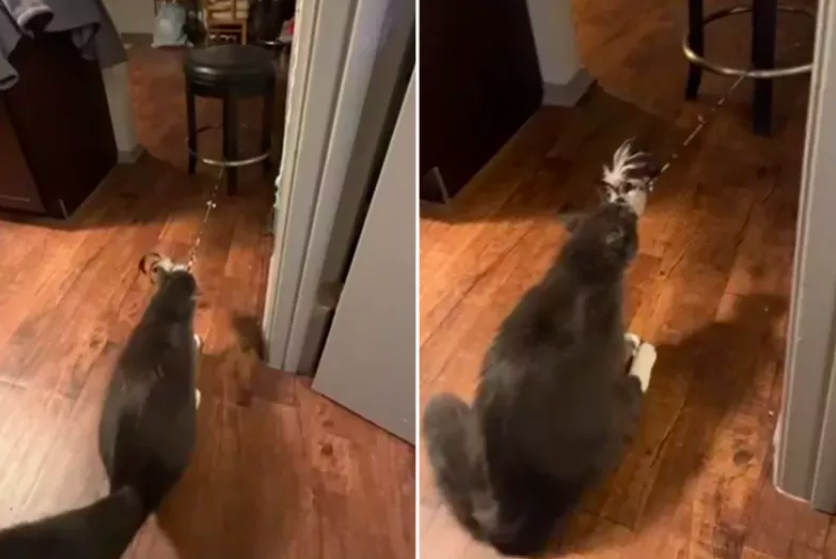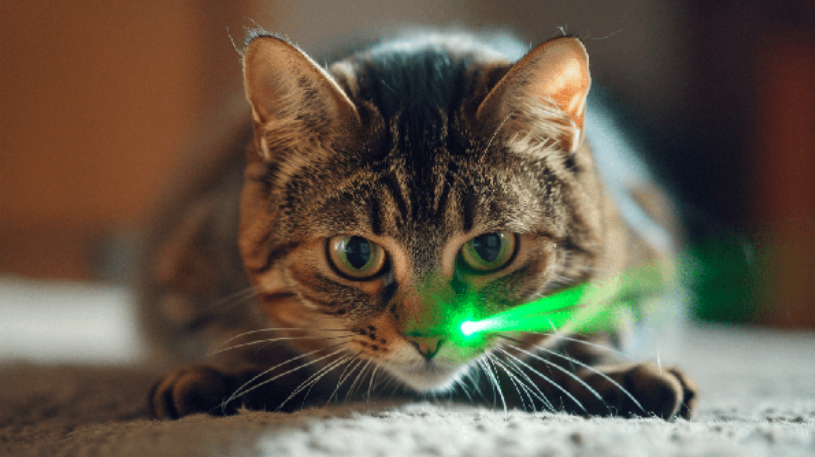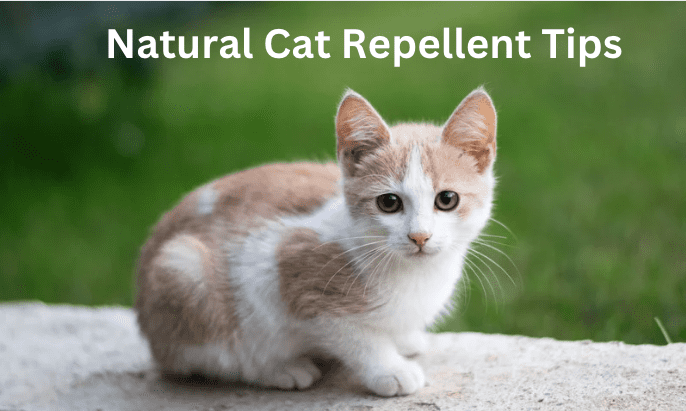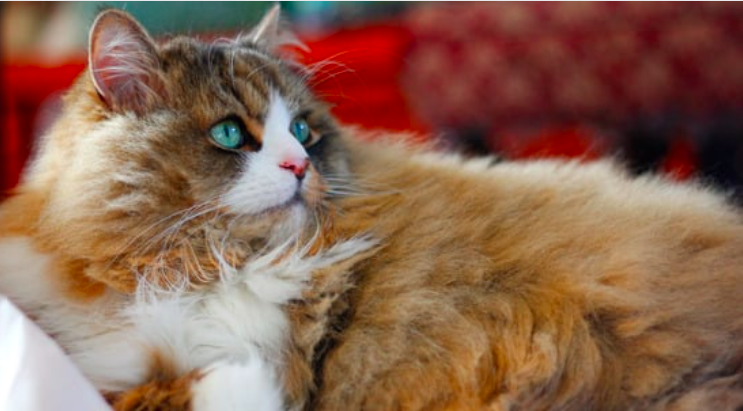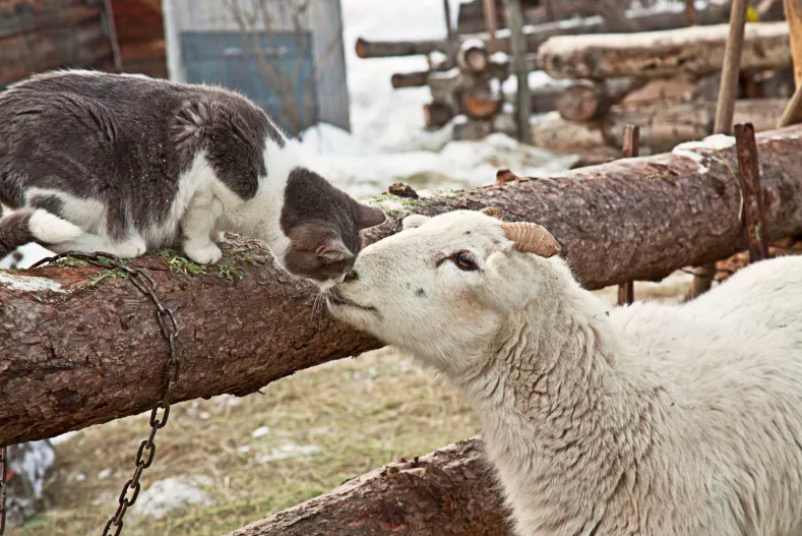Cats
Unveiling the Allure of Seal-Point Himalayan Cats
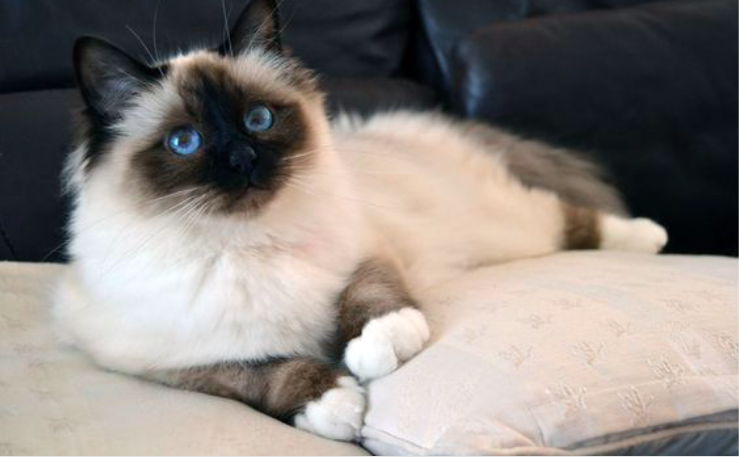
Unveiling the Allure of Seal-Point Himalayan Cats
There’s a breed of cat that exudes elegance, with an air of regal mystique that’s hard to resist.
Meet the Seal-Point Himalayan, a feline wonder that has captured the hearts of cat enthusiasts worldwide.
In this comprehensive guide, we dive deep into the enchanting world of Seal-Point Himalayan cats, exploring their distinctive characteristics, history, care requirements, and more.
Get ready to embark on a journey through the fascinating realm of these captivating felines.
The Distinctive Beauty of Seal-Point Himalayan Cats
Seal-Point Himalayan cats are a breed apart, with a beauty that leaves a lasting impression. Their striking appearance is a result of carefully honed characteristics, each contributing to their enchanting allure.

Let’s delve into the unique features that define the distinctive beauty of these remarkable felines.
Understanding Seal-Point Markings
At first glance, what sets Seal-Point Himalayans apart is their coat pattern. Their bodies are predominantly adorned with a luxurious cream-colored coat that exudes elegance.
However, the true showstoppers are the contrasting dark brown or black points that adorn their ears, face, paws, and tail. These points are a signature feature, creating a visually arresting contrast that sets them apart from other cat breeds.
The term “seal-point” is derived from the resemblance of their dark points to the color of a seal’s fur. The contrast between the cream body and the dark points is nothing short of mesmerizing.
It’s as if an artist carefully crafted each mark to perfection, resulting in a breed that looks poised and regal.
The Mesmerizing Blue Eyes
If the markings are the first act in the beauty of a Seal-Point Himalayan, then their eyes are undoubtedly the grand finale. These felines boast deep blue, almond-shaped eyes that seem to peer into your soul.
The intensity of their gaze is nothing short of captivating, and it’s often said that their eyes hold the secrets to their gentle and affectionate nature. Their sapphire orbs are not only striking but also highly expressive.
Seal-Point Himalayans are known for their ability to convey a range of emotions through their eyes, from contentment and curiosity to playfulness and love.
It’s no wonder that their eyes are often the first feature that captures the hearts of those who encounter them.
The Origins and History of Seal-Point Himalayan Cats
Every breed has a story to tell, and the Seal-Point Himalayan cat is no exception. These felines have a rich history that stretches back in time, with roots intertwined with both Persian and Siamese cat breeds.

To truly appreciate the regal charm of Seal-Point Himalayans, let’s journey into their past and explore their origins and history.
A Royal Heritage
The tale of Seal-Point Himalayan cats begins in the early 20th century, where breeders embarked on a mission to create a feline masterpiece.
The goal was to combine the luxurious long coat of Persian cats with the striking color points of Siamese cats. This breeding experiment resulted in a breed that would soon become synonymous with elegance and grace.
The name “Himalayan” pays homage to the breed’s Siamese ancestry, as it reflects the Siamese practice of naming cats after Asian locations.
The term “seal-point” specifically refers to the dark brown or black points on their ears, face, paws, and tail, which resemble the color of a seal’s fur. It’s these unique points that lend the breed its distinctive appearance.
Over the years, Seal-Point Himalayan cats gained recognition for their captivating beauty and charming personalities. They became highly sought-after pets among cat enthusiasts, and their popularity only continued to grow.
Today, Seal-Point Himalayans stand as a testament to the dedication and artistry of breeders who meticulously crafted a breed that combines the best of both Persian and Siamese cats.
Their royal heritage and regal beauty make them a beloved choice for those who appreciate feline elegance and grace.
Personality and Temperament of Seal-Point Himalayan Cats
The Seal-Point Himalayan cat is not just a pretty face; they possess a personality that matches their regal appearance. These felines are known for their gentle and affectionate nature, making them exceptional companions.
Let’s delve into the fascinating world of Seal-Point Himalayan cat personalities and discover what sets them apart.
Gentle Companionship
Seal-Point Himalayans are renowned for their calm and composed disposition. They thrive on human companionship and are known for forming strong bonds with their owners.
If you’re looking for a feline friend who enjoys snuggling on the couch or curling up on your lap, these cats fit the bill perfectly. Their affectionate nature extends to their willingness to be held and cuddled.
Many Seal-Point Himalayan cats revel in being pampered and are content to be the center of attention in a loving household. Their tranquil demeanor makes them ideal pets for families of all sizes, including households with children and other pets.
Playful and Curious
While they may exude poise and elegance, Seal-Point Himalayan cats have a playful and curious side. They enjoy interactive play sessions and are known for their love of toys that engage their minds and bodies.
Feather wands, laser pointers, and puzzle toys can keep them entertained for hours. Their inquisitive nature makes them keen explorers of their surroundings.
They’ll often investigate new scents, textures, and spaces, all while maintaining their composed demeanor. This combination of playfulness and curiosity adds a delightful dynamic to their personalities.
Vocal Expressiveness
Seal-Point Himalayans are not as vocal as their Siamese relatives, but they do communicate through soft meows and purrs.
They use their voices to express their needs and desires, whether it’s a gentle request for attention or a sign of contentment. Their vocalizations are endearing and serve as a charming way for them to engage with their human companions.
The Elegant Appearance of Seal-Point Himalayan Cats
Seal-Point Himalayan cats are the epitome of feline grace and beauty. Their exquisite appearance is a harmonious blend of unique features that captivates the hearts of cat lovers worldwide.
Let’s delve into the enchanting aesthetics that define the appearance of these regal felines.
Striking Coat and Markings
The most conspicuous feature of a Seal-Point Himalayan cat is undoubtedly its coat. It’s a masterpiece of nature, combining luxurious length with a stunning color pattern. Here’s what makes their coat truly stand out:
- Creamy Base: The body of a Seal-Point Himalayan is adorned with a plush, creamy-white coat that exudes elegance. This soft and silky fur adds to their overall regal appearance.
- Dark Points: The name “seal-point” originates from the rich, dark brown or black points that embellish their ears, face, paws, and tail. These points create a striking contrast against the cream base, akin to an artist’s careful brush strokes.
Mesmerizing Blue Eyes
The eyes of a Seal-Point Himalayan cat are often described as the windows to their soul. Their deep blue, almond-shaped eyes are truly enchanting and possess a unique charm:
- Intense Gaze: These cats have an intense, soul-penetrating gaze that seems to draw you in. Their eyes are expressive, conveying a range of emotions from curiosity and affection to playfulness and love.
- Sapphire Orbs: The deep blue hue of their eyes is reminiscent of precious sapphires. It’s this vibrant shade that enhances the allure of their overall appearance.
Dainty Features
Seal-Point Himalayans have delicate, refined facial features that contribute to their elegant appearance:
- Facial Structure: Their faces have a distinct structure, with a flat, rounded head and a short, upturned nose. These features lend an air of sophistication to their look.
- Ear Tufts: Some Seal-Point Himalayans sport tufts of fur on their ears, adding a touch of whimsy to their appearance.
- Whisker Pads: Prominent whisker pads accentuate their facial charm, giving them an almost regal presence.
Care Requirements for Seal-Point Himalayan Cats
Owning a Seal-Point Himalayan cat comes with the responsibility of providing them with the care they need to thrive. These elegant felines have specific requirements that ensure their well-being and maintain their striking appearance.
Let’s explore the essential aspects of caring for a Seal-Point Himalayan cat.
Grooming and Coat Maintenance
One of the most distinctive features of Seal-Point Himalayan cats is their long, luxurious coat. While this coat adds to their regal appearance, it also requires regular grooming to keep it in pristine condition. Here’s what you need to know:
- Daily Brushing: To prevent matting and tangling, daily brushing is essential for Seal-Point Himalayans. Use a soft-bristle brush or a comb designed for long-haired cats to gently remove loose fur and keep their coat silky smooth.
- Eye Cleaning: Due to their unique facial structure, Himalayans are prone to tear staining. Clean their eyes daily with a damp cloth to remove any accumulated discharge and prevent unsightly stains.
- Regular Baths: Occasional baths, typically once a month or as needed, can help keep their coat clean and free from oil buildup. Use a cat-specific shampoo and ensure thorough rinsing and drying.
- Oral Care: Dental hygiene is crucial for cats of all breeds, including Seal-Point Himalayans. Brush their teeth regularly to prevent dental issues, as dental problems can be common in cats.
Health Considerations
Seal-Point Himalayan cats are generally healthy, but like all breeds, they can be prone to certain health issues.
Regular veterinary check-ups are essential for early detection and management of any potential problems. Here are some health considerations to keep in mind:
- Respiratory Issues: Himalayans have brachycephalic faces, which can make them susceptible to respiratory issues. Keep an eye out for signs of labored breathing or excessive snoring, and consult your vet if you notice any concerns.
- Kidney Disease: This breed can be prone to kidney disease, so it’s crucial to monitor their water intake and urinary habits. Adequate hydration and a balanced diet are essential for kidney health.
- Weight Management: Seal-Point Himalayans have a tendency to gain weight, so it’s important to provide them with a balanced diet and engage them in regular play and exercise to maintain a healthy weight.
- Vaccinations and Preventive Care: Ensure your cat receives all necessary vaccinations and preventive treatments, such as flea and tick control and deworming.
Life Expectancy of Seal-Point Himalayan Cats
The companionship of a Seal-Point Himalayan cat can be a source of joy and comfort for many years. Understanding their life expectancy is crucial for providing them with the best care and ensuring a long and fulfilling life.
Let’s explore the typical lifespan of these regal felines and how you can contribute to their longevity.
Average Lifespan
Seal-Point Himalayan cats, like most domestic felines, have an average lifespan that can vary depending on various factors. On average, these cats can live anywhere from 12 to 16 years.
However, with proper care and attention to their health, some Seal-Point Himalayans have been known to reach their late teens and even early twenties.
Factors Affecting Lifespan
Several factors can influence the lifespan of a Seal-Point Himalayan cat:
- Genetics: Genetic factors play a significant role in determining a cat’s longevity. Some cats may inherit predispositions to certain health conditions, while others may have robust genetic backgrounds that contribute to a longer life.
- Healthcare: Regular veterinary check-ups and preventive care are essential for detecting and managing health issues early. Vaccinations, dental care, and parasite control are crucial aspects of healthcare.
- Diet and Nutrition: Providing a well-balanced diet and managing portion sizes to prevent obesity can contribute to a longer, healthier life for your cat.
- Exercise and Mental Stimulation: Engaging your cat in regular play and mental stimulation activities can keep them physically and mentally active, promoting overall well-being.
- Stress and Environment: A stress-free and stimulating environment can positively impact a cat’s longevity. Minimizing stressors and ensuring a safe and comfortable living space are vital.
Longevity Tips
To help your Seal-Point Himalayan cat enjoy a longer, healthier life, consider the following tips:
- Regular Vet Visits: Schedule regular check-ups with your veterinarian to monitor your cat’s health and address any concerns promptly.
- Balanced Diet: Provide a balanced diet tailored to your cat’s age and specific needs. Consult with your vet for dietary recommendations.
- Weight Management: Prevent obesity by monitoring your cat’s weight and adjusting their diet and exercise accordingly.
- Hydration: Ensure they have access to fresh, clean water at all times to promote kidney health.
- Love and Attention: Offer plenty of love, attention, and mental stimulation to keep them happy and content.
Nutrition for Seal-Point Himalayan Cats
A well-balanced diet is essential for the health and vitality of your Seal-Point Himalayan cat. These regal felines have specific nutritional needs that cater to their breed characteristics.
Let’s dive into the world of feline nutrition and explore how to provide the best diet for your beloved pet.
The Importance of Quality Cat Food
Choosing the right cat food is the foundation of good nutrition. Opt for high-quality commercial cat food that is specifically formulated for adult cats. Look for products that list a source of animal protein, such as chicken or fish, as the primary ingredient.
Key Considerations:
- Protein Content: Ensure that the cat food you select has a sufficient protein content. Protein is essential for muscle maintenance and overall health.
- Avoid Fillers: Steer clear of cat foods that contain excessive fillers like corn or soy. These ingredients offer little nutritional value and can lead to weight gain.
- Balanced Diet: Look for cat food that provides a balanced mix of protein, fats, and carbohydrates. A well-rounded diet supports your cat’s overall health.
Portion Control
Seal-Point Himalayan cats have a tendency to gain weight, so it’s crucial to practice portion control. Follow the feeding guidelines provided on the cat food packaging, and consider dividing their daily portion into multiple meals to prevent overeating.
Key Tips:
- Monitor Weight: Keep an eye on your cat’s weight and adjust their portion size as needed to maintain a healthy weight.
- Avoid Free Feeding: Refrain from leaving food out all day for your cat to graze on. Controlled portions are more effective in managing their weight.
Hydration
Proper hydration is vital for your Seal-Point Himalayan’s health, especially considering their potential susceptibility to kidney issues. Ensure they have access to fresh, clean water at all times. Some cats prefer running water, so a cat water fountain can be a wise investment.
Key Considerations:
- Wet Food: Adding wet cat food to their diet can increase their water intake, which is beneficial for kidney health. Consult your vet for recommendations on incorporating wet food.
Special Dietary Considerations
Seal-Point Himalayan cats may require special dietary considerations based on their individual health needs. If your cat has specific dietary requirements or allergies, consult with your veterinarian to determine the best food options.
Key Considerations:
- Prescription Diets: In some cases, your vet may recommend a prescription diet to address specific health issues or dietary sensitivities.
Conclusion: Embracing the Charm of Seal-Point Himalayans
Seal-Point Himalayan cats are not just pets; they are living works of art. Their exquisite appearance, gentle temperament, and royal heritage make them a beloved addition to any cat-loving household.
Whether you’re a seasoned cat enthusiast or a first-time cat owner, these captivating felines are sure to steal your heart. Embrace the allure of Seal-Point Himalayan cats and experience the joy of sharing your life with these regal companions.
Questions People Also Ask: (FAQs)
Are Seal-Point Himalayans high-maintenance in terms of grooming?
Yes, their long coats require regular brushing to prevent matting and maintain their appearance.
Do Seal-Point Himalayans get along with children and other pets?
Yes, they are generally friendly and adaptable, making them suitable for families with children and other pets.
What is the average lifespan of a Seal-Point Himalayan?
With proper care, Seal-Point Himalayans can live for around 12 to 15 years.
Are they vocal like Siamese cats?
While they may be less vocal than purebred Siamese cats, they can still communicate their needs through soft meows and purrs.
Do they have any specific dietary requirements?
A balanced diet that meets their nutritional needs is essential. Consult your vet for guidance on the best food for your Seal-Point Himalayan.
We appreciate you for taking the time to read this article!
Finally, we hope you found this article interesting? And what do you think about ”Unveiling the Allure of Seal-Point Himalayan Cats!?”
Please feel free to share or inform your friends about this article and this site, thanks!
And let us know if you observe something that isn’t quite right.
Cats
Clever Cats: Breeds That Learn Fast
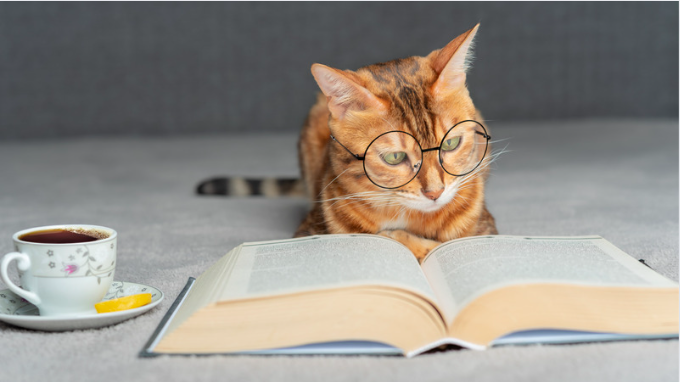
Clever Cats: Breeds That Learn Fast
Cats have always fascinated us with their agility, independence, and sometimes enigmatic behavior. Among the vast array of feline breeds, some stand out for their remarkable intelligence and ability to learn quickly.
In this article, we will delve into the world of these exceptional cat breeds, exploring their unique characteristics, training capabilities, and what makes them such quick learners.
Whether you’re a seasoned cat owner or considering adopting a new feline friend, this comprehensive guide will help you understand the breeds that are not only intelligent but also a joy to train.
Why Intelligence Matters in Cats
Understanding Feline Intelligence
Feline intelligence is a multi-faceted trait that encompasses problem-solving abilities, social learning, and adaptability. Unlike dogs, cats often showcase their intelligence in more subtle ways, such as manipulating objects to get what they want or learning routines and commands.
Benefits of Owning Intelligent Cats
Owning an intelligent cat comes with several benefits. These cats are more interactive and engaging, making them excellent companions. They can learn tricks, follow commands, and even understand basic household rules, which makes living with them more enjoyable and less challenging.
Top Cat Breeds Known for Their Intelligence
Abyssinian
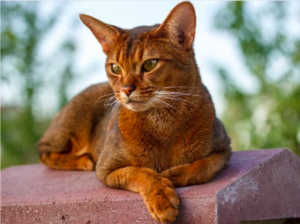
Overview
The Abyssinian is often hailed as one of the smartest cat breeds. Known for their curiosity and playful nature, Abyssinians are quick learners who thrive on mental stimulation.
Training and Activities
Abyssinians are highly trainable and enjoy interactive toys and puzzle feeders. They can learn tricks such as fetching and even walking on a leash. Their love for heights means they appreciate cat trees and climbing structures.
Siamese
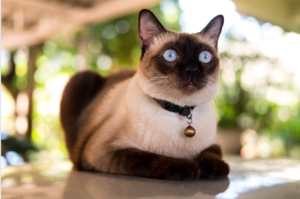
Overview
Siamese cats are not only intelligent but also highly vocal and sociable. They form strong bonds with their owners and are always eager to engage in activities.
Training and Activities
Siamese cats are quick to learn tricks and commands. They enjoy interactive play and can be trained to perform simple tasks like opening doors or retrieving items. Their vocal nature also makes them responsive to verbal cues.
Bengal
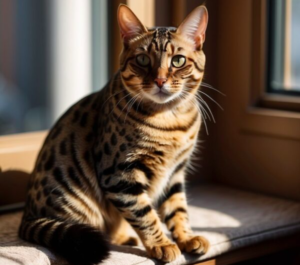
Overview
Bengals are known for their striking appearance and high energy levels. Their intelligence is reflected in their ability to solve problems and learn complex tasks.
Training and Activities
Bengals enjoy activities that challenge their minds, such as agility courses and puzzle toys. They can be trained to walk on a leash and perform tricks. Providing them with interactive playtime helps in channeling their energy positively.
Burmese
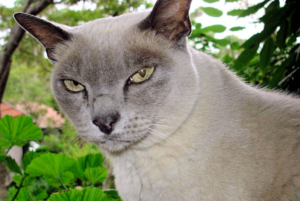
Overview
Burmese cats are affectionate, people-oriented, and intelligent. They enjoy being involved in family activities and can be trained to follow various commands.
Training and Activities
Burmese cats are quick learners and respond well to positive reinforcement. They enjoy learning tricks, playing fetch, and interactive games that stimulate their minds.
Scottish Fold
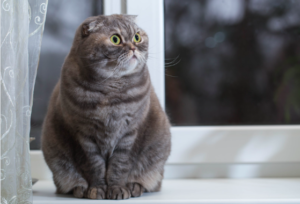
Overview
Scottish Folds are known for their distinctive folded ears and sweet demeanor. Despite their calm appearance, they are intelligent and can learn quickly.
Training and Activities
Scottish Folds enjoy interactive toys and games. They can learn tricks and commands and appreciate routines that keep their minds engaged.
Training Tips for Intelligent Cats
Start Early
Begin training your cat as early as possible. Kittens are more receptive to learning new behaviors and routines.
Use Positive Reinforcement
Reward your cat with treats, praise, or playtime whenever they successfully perform a desired behavior. Positive reinforcement strengthens the association between the action and the reward.
Keep Sessions Short and Fun
Cats have shorter attention spans than dogs, so keep training sessions brief and enjoyable. Incorporate playtime to make learning fun for your cat.
Be Patient and Consistent
Patience and consistency are key when training cats. Repeat commands and routines regularly, and avoid punishing your cat for mistakes. Consistency helps reinforce learning and builds trust.
Challenges of Training Intelligent Cats
Independence and Stubbornness
Intelligent cats can sometimes be independent and stubborn. They might choose to ignore commands if they are not in the mood, so it’s important to understand their behavior and work with it.
Need for Mental Stimulation
Highly intelligent cats require constant mental stimulation. Boredom can lead to behavioral issues, so ensure they have plenty of toys, activities, and interaction to keep their minds engaged.
Managing High Energy Levels
Breeds like Bengals have high energy levels that need to be managed. Providing them with enough physical and mental exercise is crucial to prevent destructive behavior.
Living with Intelligent Cats
Creating an Enriched Environment
An enriched environment is essential for intelligent cats. This includes a variety of toys, climbing structures, scratching posts, and interactive feeders to keep them stimulated.
Social Interaction
Intelligent cats thrive on social interaction. Spend quality time playing, training, and simply bonding with your cat to ensure they feel valued and engaged.
Understanding Their Needs
Each intelligent breed has its own unique needs and preferences. Understanding these and catering to them will help you build a strong and positive relationship with your cat.
Conclusion
Owning an intelligent cat can be an incredibly rewarding experience. These quick learners bring joy, challenge, and companionship to their owners. By understanding their unique characteristics and providing the right environment and training, you can foster a deep and fulfilling relationship with your feline friend.
Whether you choose an Abyssinian, Siamese, Bengal, Burmese, or Scottish Fold, you’re sure to enjoy the remarkable intelligence and personality they bring into your home.
Frequently Asked Questions (FAQs)
What makes a cat breed intelligent?
Intelligent cat breeds often show high levels of problem-solving abilities, adaptability, and social learning. They can quickly learn commands, tricks, and routines.
Can all cats be trained?
While some breeds are more receptive to training than others, all cats can be trained to some extent. Patience, consistency, and positive reinforcement are key to successful training.
What are the best toys for intelligent cats?
Interactive toys, puzzle feeders, and climbing structures are ideal for intelligent cats. These toys provide mental stimulation and keep them engaged.
How do I keep my intelligent cat from getting bored?
Provide a variety of toys, engage in regular playtime, and introduce new activities regularly. Rotating toys and creating an enriched environment also help prevent boredom.
Are intelligent cats more difficult to care for?
Intelligent cats can be more demanding in terms of mental stimulation and interaction. However, with the right approach and environment, they can be delightful companions.
We appreciate you for taking the time to read this article!
Finally, we hope you found this article interesting? And what do you think about ”Clever Cats: Breeds That Learn Fast!?”
Please feel free to share or inform your friends about this article and this site, thanks!
And let us know if you observe something that isn’t quite right.
Cats
The Enchanting Scottish Fold: A Guide to the Adorable Feline with Folded Ears
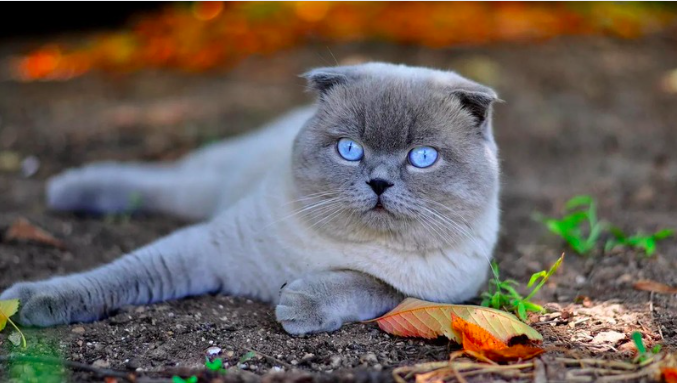
The Enchanting Scottish Fold: A Guide to the Adorable Feline with Folded Ears
Welcome to the world of the Scottish Fold cat, where charm and curiosity meet in an irresistibly adorable package. With their distinctive folded ears and sweet expression, Scottish Folds have captured the hearts of cat lovers around the world. Originally hailing from Scotland, these cats are known for their gentle demeanor, playful nature, and loving personality.
In this comprehensive guide, we will delve into the fascinating world of Scottish Fold cats, exploring their history, physical characteristics, personality traits, and care requirements. Whether you’re a seasoned cat owner or considering adding a feline friend to your family, the Scottish Fold’s unique charm and affectionate nature make them a delightful addition to any home. Join us as we unravel the enchanting tale of the Scottish Fold cat and discover why they are such beloved companions.
Fold
Overview
The Scottish Fold cat is a charming and distinctive breed known for its unique folded ears and sweet expression. Originating from Scotland in the 1960s, these cats have captured the hearts of many with their endearing appearance and affectionate nature. Scottish Folds are known for their gentle and loving temperament, making them wonderful companions for families and individuals alike.
History and Origins
The Scottish Fold breed traces its roots back to a white barn cat named Susie, who was found in Scotland in the early 1960s. Susie had a unique genetic mutation that caused her ears to fold forward, giving her an owl-like appearance. This trait was passed down to her kittens, and thus, the Scottish Fold breed was born. The breed quickly gained popularity for its distinctive look and friendly demeanor, and it was officially recognized by cat registries in the 1970s.
Physical Characteristics
- Folded Ears: The most distinctive feature of the Scottish Fold is its folded ears, which give the cat a sweet and owl-like appearance. Not all Scottish Folds have folded ears; some may have straight ears, known as “straights,” which are also common in the breed.
- Coat and Colors: Scottish Folds can have either a short or long coat, both of which are dense and plush. They come in a variety of colors and patterns, including tabby, tortoiseshell, and solid colors like white, black, and blue.
- Body Structure: Scottish Folds are medium-sized cats with a rounded appearance. They have sturdy bodies, round faces, and large, expressive eyes that give them a sweet and gentle expression.
Personality and Behavior
Scottish Folds are known for their calm and laid-back demeanor. They are affectionate cats that enjoy being around people and are often described as “lap cats” due to their love of cuddling. They are also known for their playful nature and enjoy interactive toys and games. Scottish Folds are generally good with children and other pets, making them a great choice for families.

Health and Care
- Ear Care: Due to their folded ears, Scottish Folds may be prone to ear infections. It’s important to regularly check and clean their ears to prevent issues.
- Grooming: Scottish Folds have dense coats that require regular grooming to prevent matting and tangling. Weekly brushing is usually sufficient to keep their coat in good condition.
- Health Concerns: Scottish Folds are generally healthy, but they may be prone to certain genetic conditions, including a skeletal disorder known as osteochondrodysplasia. Responsible breeding practices can help minimize the risk of these health issues.
Training and Activities
Scottish Folds are intelligent cats that can be trained to perform tricks and commands. They enjoy interactive play and benefit from toys that stimulate their minds and bodies. Providing them with scratching posts and other outlets for their natural behaviors can help keep them happy and healthy.
Compatibility with Families and Other Pets
Scottish Folds are known for their gentle and affectionate nature, making them great companions for families. They are good with children and other pets, including dogs, and can adapt well to different environments. Their loving and sociable nature makes them a popular choice for households looking for a friendly and affectionate pet.
Conclusion
The Scottish Fold cat is a unique and charming breed known for its folded ears and sweet expression. With their gentle demeanor and affectionate nature, Scottish Folds make wonderful companions for families and individuals alike. Whether you’re looking for a lap cat to cuddle with or a playful friend to keep you entertained, the Scottish Fold cat is sure to bring joy and companionship to your home.
FAQs about Scottish Fold Cats
Why do Scottish Folds have folded ears?
Scottish Folds have a genetic mutation that affects the cartilage in their ears, causing them to fold forward. This unique trait gives them their distinctive appearance.
Are Scottish Folds prone to ear problems due to their folded ears?
Yes, Scottish Folds may be more prone to ear infections due to the fold in their ears, which can trap dirt and moisture. Regular cleaning and monitoring of their ears can help prevent issues.
Do Scottish Folds have any health issues associated with their folded ears?
Scottish Folds may be prone to a condition called osteochondrodysplasia, which affects the development of their cartilage and bones. Responsible breeding practices can help reduce the risk of this condition.
Are Scottish Folds good with children and other pets?
Scottish Folds are known for their gentle and friendly nature, making them good companions for families with children and other pets. They enjoy socializing and being part of the family.
Do Scottish Folds require a lot of grooming?
Scottish Folds have dense coats that require regular grooming to prevent matting and tangles. Weekly brushing is recommended to keep their coat in good condition.
We appreciate you for taking the time to read this article!
Finally, we hope you found this article interesting? And what do you think about ”The Enchanting Scottish Fold: A Guide to the Adorable Feline with Folded Ears!?”
Please feel free to share or inform your friends about this article and this site, thanks!
And let us know if you observe something that isn’t quite right.
Cats
The Enchanting Burmese Cat: Affectionate, Playful, and Loyal
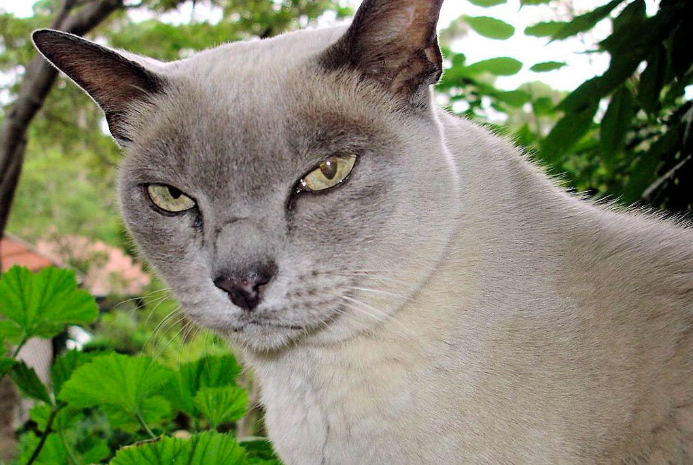
The Enchanting Burmese Cat: Affectionate, Playful, and Loyal
Enter the world of the Burmese cat, where elegance meets affection in a charming feline companion. Originating from the temples of Burma, these cats have captured the hearts of cat lovers worldwide with their striking appearance and loving nature. With their sleek coats, expressive eyes, and playful demeanor, Burmese cats are not just pets; they are cherished members of the family.
In this comprehensive guide, we delve into the captivating world of Burmese cats, exploring their history, physical characteristics, personality traits, and care requirements. Whether you’re a seasoned cat owner or considering adding a feline friend to your family, the Burmese cat’s unique blend of beauty, intelligence, and affection is sure to captivate you. Join us as we unravel the enchanting tale of the Burmese cat and discover why they are such beloved companions.
Burmese
Overview
The Burmese cat is a breed known for its striking appearance and affectionate nature. Originating from Burma (now Myanmar), these cats are renowned for their sleek, muscular bodies, expressive eyes, and silky coats. Burmese cats are often described as “people-oriented,” as they form strong bonds with their human companions and enjoy being part of the family. Their playful and curious nature makes them delightful companions for both children and adults alike.
History and Origins
The history of the Burmese cat can be traced back to ancient Burma, where they were considered sacred and kept by monks in temples. They were later brought to the West in the early 20th century and quickly gained popularity for their striking appearance and affectionate personality. The breed has since become a favorite among cat enthusiasts worldwide, known for its loving and loyal nature.
Physical Characteristics
- Coat and Colors: Burmese cats have short, sleek coats that lie close to the body. They come in a variety of colors, including sable, champagne, blue, and platinum. The coat is soft and silky to the touch, adding to the breed’s overall charm.
- Body Structure: Burmese cats are medium-sized with a muscular build. They have rounded heads, large, expressive eyes, and short, straight noses. Their compact bodies give them a sturdy appearance, and they move with grace and agility.
- Eyes and Ears: Their eyes are one of their most striking features, being large, expressive, and usually a deep, rich color that complements their coat. Their ears are medium-sized, slightly rounded at the tips, and set wide apart on the head.
Personality and Behavior
Burmese cats are known for their affectionate and sociable nature. They are often described as “dog-like” due to their tendency to follow their owners around the house and seek out human companionship. They are also highly intelligent and enjoy interactive play, making them great companions for families with children or other pets.
In addition to their affectionate nature, Burmese cats are also known for their vocalizations. They have a soft, sweet voice that they use to communicate with their owners, often engaging in “conversations” and expressing their needs and desires.

Health and Care
- Grooming: Burmese cats have short coats that require minimal grooming. Weekly brushing is usually sufficient to remove loose hair and keep their coat shiny. They also benefit from regular dental care to prevent oral health issues.
- Diet: A high-quality, balanced diet is essential for maintaining the health and vitality of Burmese cats. They should be fed a diet that is appropriate for their age, size, and activity level to ensure they receive the nutrients they need.
- Health Concerns: Burmese cats are generally healthy, but they can be prone to certain genetic conditions such as hypertrophic cardiomyopathy (HCM) and diabetes. Regular veterinary check-ups and a healthy diet can help manage these risks.
Training and Activities
Burmese cats are intelligent and can be trained to perform various tricks and commands. They enjoy interactive play and thrive on mental stimulation. Providing them with toys, puzzle feeders, and opportunities for play can help keep them entertained and prevent boredom.
Compatibility with Families and Other Pets
Burmese cats are known for their loving and social nature, making them great companions for families. They get along well with children and other pets, including dogs, as long as they are properly introduced. Their affectionate demeanor and playful nature make them a popular choice for households looking for a friendly and engaging pet.
Conclusion
The Burmese cat is a breed beloved for its affectionate nature, striking appearance, and playful personality. Whether you are looking for a loyal companion or a playful friend, the Burmese cat is sure to bring joy and warmth to your home. With their loving nature and sociable demeanor, Burmese cats make wonderful pets for families and individuals alike, enriching their lives with their presence and affection.
FAQs about Burmese Cats
What is the temperament of a Burmese cat like?
Burmese cats are known for their affectionate and social nature. They are often described as “dog-like” due to their loyalty and tendency to follow their owners around the house. They enjoy being involved in family activities and form strong bonds with their human companions.
Are Burmese cats good with children and other pets?
Yes, Burmese cats are generally good with children and other pets. They are playful and enjoy interactive play, making them great companions for families with children. They also get along well with other pets, including dogs, especially if they are introduced properly.
Do Burmese cats require a lot of grooming?
Burmese cats have short, sleek coats that require minimal grooming. Weekly brushing is usually sufficient to remove loose hair and keep their coat shiny. They also benefit from regular dental care to prevent oral health issues.
Are Burmese cats vocal?
Burmese cats are known for their soft, sweet voice, but they are not excessively vocal. They use their voice to communicate with their owners, often engaging in “conversations” and expressing their needs and desires.
What kind of environment is best for a Burmese cat?
Burmese cats thrive in environments where they have plenty of opportunities for play and interaction. They enjoy being part of the family and should have access to toys, scratching posts, and other enrichment activities. They also enjoy having access to outdoor enclosures or safe outdoor spaces where they can explore and indulge their natural instincts.
We appreciate you for taking the time to read this article!
Finally, we hope you found this article interesting? And what do you think about ”The Enchanting Burmese Cat: Affectionate, Playful, and Loyal!?”
Please feel free to share or inform your friends about this article and this site, thanks!
And let us know if you observe something that isn’t quite right.
-

 Pet Care2 years ago
Pet Care2 years agoThe Best Dog Collars For 2022
-

 Dogs2 years ago
Dogs2 years agoBichon Frise: The Happy, Playful, and Cuddly Companion
-

 Trending Pet Stories1 year ago
Trending Pet Stories1 year ago2023 ‘World’s Ugliest Dog’ Winner: Scooter’s Tale of Resilience
-

 Animals2 years ago
Animals2 years agoAre There Animals Having Down Syndrome?
-

 Pets2 years ago
Pets2 years agoThe Fascinating World Of The Red Chameleon
-

 Dogs2 years ago
Dogs2 years agoTop 10 Most Popular Dog Breeds According To AKC.
-

 Dogs2 years ago
Dogs2 years ago21 Dog Breeds That Resemble Bears Or Teddy Bears!
-

 Dogs2 years ago
Dogs2 years agoEskimo Dogs from Canada – What Are They? – Find Out!


